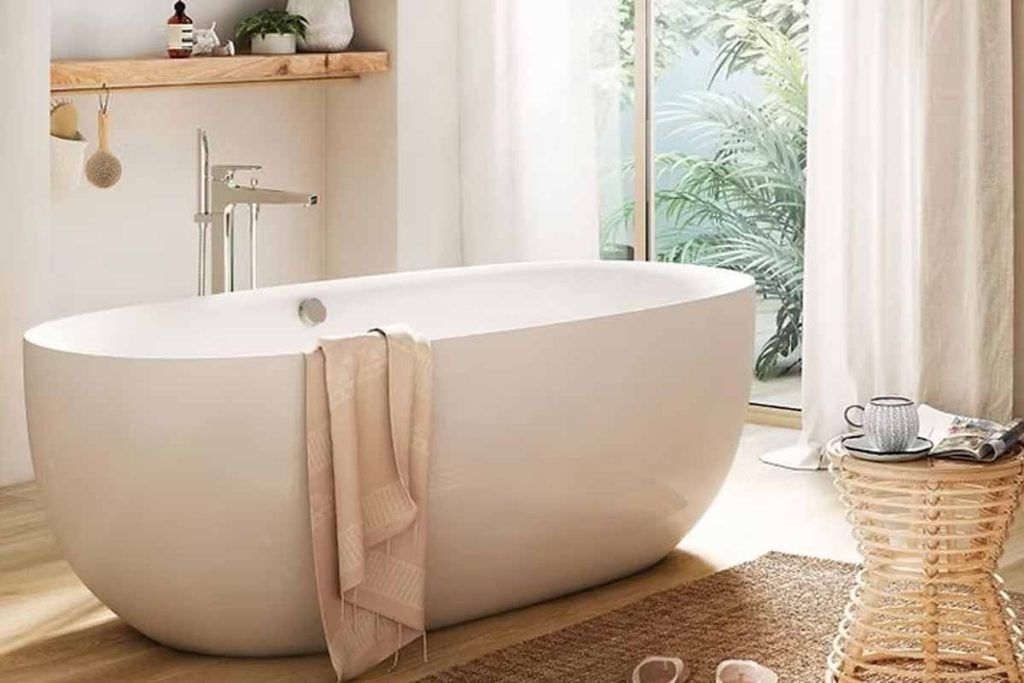A quiet shift is reshaping morning routines and evening wind-downs. Homeowners who once prized long soaks now prize speed, comfort, and style. As a result, bathtubs no longer anchor many remodels. Groutless, walk-in showers promise spa calm with less hassle. They feel open, look modern, and welcome everyone more easily. Because maintenance shrinks and upgrades shine, designers see momentum accelerating through 2025. The look reads refined; the use feels effortless.
Why bathtubs are losing ground in busy homes
Open, step-free showers match real life. They reduce barriers for kids, guests, and aging parents. Pet washing stops being chaos. A bigger footprint turns tight corners into a breezy zone. Because surfaces stay continuous, water sheds fast and cleanup is simple. The room finally works every day.
Pleasure drives the shift, not only pragmatism. Rainfall heads soften pressure while handheld wands add control. Dual sprayers let two people rinse without crowding. Matte black or warm gold fixtures bring a tailored note. Benches and shelves add comfort. Short showers still feel generous, and stress drops.
Design pros validate the move. Angi reports homeowners replacing tubs with larger, low-maintenance, groutless showers, and growing interest in black or gold finishes, double heads, and handhelds. NKBA tracking shows walk-in showers replacing alcove tubs across projects in coming years. When function meets form, rooms once built around bathtubs shift to generous walk-in showers.
What groutless walk-in showers actually are
Groutless showers use large panels or slabs to cover walls without joints. Options include porcelain slabs, sintered stone, solid-surface composites, and engineered stone. These materials are non-porous, which resists stains and soap film. With fewer seams, there are fewer weak points. Installers cut panels to fit, bond, and seal.
Lines disappear, so the room looks bigger. Patterns can mimic marble veining without the upkeep. Panels often reach the ceiling, which reduces edges that collect residue. Deep scrubs become rare. A quick rinse and a squeegee keep surfaces clear. The finish stays consistent for years with basic habits.
Several manufacturers advertise one-day or next-day installs for panel systems, sometimes over existing surrounds. Compared with tile, there are fewer trades and significantly fewer steps. Homeowners avoid long cure times for grout and mastic. Disruption shrinks, which matters in single-bath homes. Few upgrades move this quickly; bathtubs almost never do.
Cleaner routines, safer surfaces, and lower water use
Grout lines trap moisture and grime when neglected. Panels reduce those nooks, so hygiene improves with basic care. A neutral cleaner and a soft cloth usually suffice. Because walls are non-porous, stains have nowhere to stay. Good ventilation and a quick squeegee finish the job in minutes.
A full bath can require dozens of gallons. A short shower with an efficient head uses far less. Families notice the difference on water bills over time. Responsible use also protects local supply in dry regions. Daily choices compound across a year, and the savings feel real.
Safety improves at every age. Curbless entries lower trip risks and welcome mobility aids. Integrated seats support sore backs and knees. Handheld wands simplify rinsing without twisting. Textured bases add traction underfoot. These features deliver independence without institutional vibes. Day to day, that safety-comfort balance is hard for bathtubs to match.
Numbers, materials, and features shaping 2025 bathrooms
Surveys show momentum behind bigger showers and seamless walls. Designers report demand for spa-like layouts with rain heads, bench seating, and floating vanities. Large-format surfaces and panels minimize grout. Clients ask for soothing palettes, warm metals, and dimmable light. The destination is calm, easy to maintain, and timeless.
Industry snapshots add detail. NKBA tracking suggests many designers expect tub removal to grow as projects favor expansive showers. Angi’s homeowner research points to larger, groutless surrounds and interest in black or gold hardware and dual showerheads. These signals reflect how people live now. Routines get shorter, yet richer.
Installation claims deserve nuance. Vendors often promise one-day wall systems, especially with solid-surface or acrylic panels. Timelines vary with framing, plumbing, and permits. Even so, fewer steps than tile remains true. Fewer joints also mean fewer future repairs. Project costs can compress. Comparable gains are rarely delivered by bathtubs, especially on cleaning time and access.
Where bathtubs still make sense for value and comfort
Resale strategy matters. Many markets still expect at least one tub in a home. Families with young children often need one. Removing every tub can narrow your buyer pool and weaken offers. Keep a tub where it serves a clear use case. Flexibility preserves appeal for the widest audience.
Soaking can ease sore muscles and calm busy minds. A deep freestanding model in a primary suite can signal luxury. If space allows two wet zones, pair a generous shower with a single tub elsewhere. The home then satisfies different routines without compromise. Balance wins.
In a compact hall bath, a curbless shower usually wins. In a multibath home, convert the primary to panels and keep a secondary tub-shower combo. Plan for grab bars, lighting, and drainage. Choose durable, low-porosity surfaces throughout. Even with change, keeping bathtubs in one bathroom preserves function and resale appeal.
Design choices that balance trend, comfort, and resale savvy
Homeowners want openness, easy cleaning, and a daily spa mood. Groutless walk-in showers deliver all three with fewer trade-offs. Keep at least one tub if it strengthens function and value. Plan for durable panels, smart storage, and comfortable lighting. Future-friendly access makes daily routines easier. Think long term, because fixtures and surfaces outlast trends. With measured choices and honest budgets, bathtubs step aside gracefully while bathrooms get better for years.
